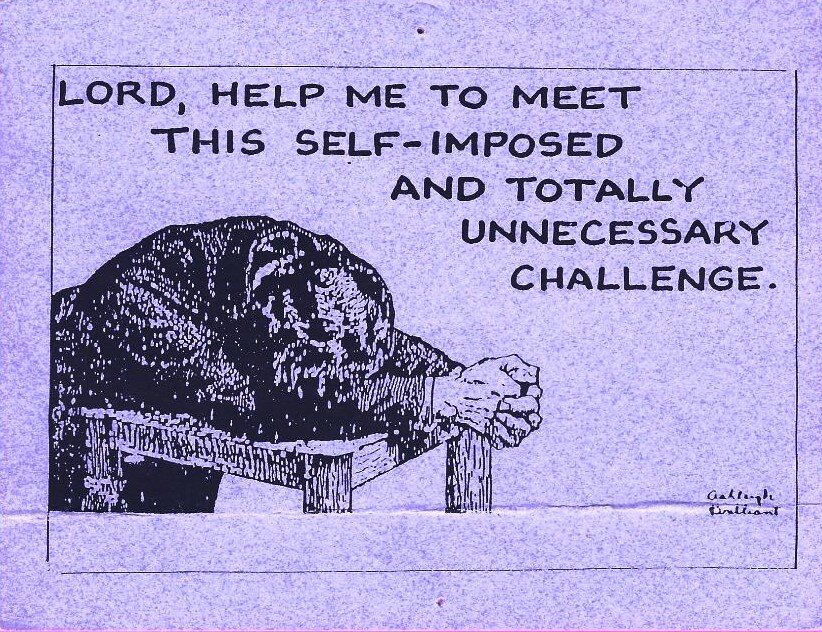The Meditation Routine
Over the Thanksgiving weekend I conducted an experiment. I decided to see what would happen if I didn’t meditate from Thursday through Sunday. I tell people that establishing a daily meditation practice is an important life-changing discipline, and although it can be challenging to make time to meditate, the benefits far outweigh the inconvenience or sacrifice one might need to make in order to do it every day. I have said that the proof is in the way life goes when we skip a day or three, and I thought I’d test whether or not my advice was accurate.
I will share my process and results, but first I want to urge you to adopt this attitude of experimentation and inquiry, to life in general but specifically toward your mindfulness practice. We all have opinions about meditation – what it is, what we hope it will do for us, how much and how often we should meditate, what style or structure our practice should have -- to name a few. Assuming you want to sit regularly, your first step might be to notice the thoughts that arise around practice. “It’s too hard,” I often hear. “I can’t get privacy anywhere because of the pandemic,” is another one, and “I sit on weekdays but I take the weekend off” (why?). “I’m just going to sit there and not be able to concentrate. It feels like I’m not really doing it” (yes you are). Question these ideas and attitudes, with curiosity and kindness. Ask yourself: Is it so?
Daily meditation has been described as mental hygiene, and that’s true. Just as we brush our teeth, feed and clothe ourselves each day, sitting meditation can be part of your routine. It isn’t a matter of “finding the time” (a frequent complaint), it’s finding the best time each day. Perhaps 20 or 30 minutes is longer than the average shower/shave/brushing, but for some it’s less time than doing all that plus hair and makeup. The best time to brush your teeth is after you’ve eaten, and you can find a good time in your day that supports your intention to set everything down and practice.
Every time we meditate we are training our minds and hearts to incline toward unity, balance, and steady calm. Even the least “successful” sit (whatever that means) trains the attention in this way. This is self-care for the soul. If you had a negative reaction when you read “20 or 30 minutes” in the previous paragraph, start with 5 or 10 minutes a day, and gradually increase the time you devote to your sits. If meditation is like weight training, doing some reps every day is better than lots of reps once a week. Consistent practice (you already know this) yields consistent results, and the miraculous thing is, the practice becomes self-sustaining. You will want to meditate; even when you don’t feel like it, you will practice because you will have developed a relationship to the fascinating inner workings of your mind/heart/body and you will stop putting that last, at the bottom of your To Do list.
Which brings me to the results of my experiment. To be honest, I was depressed and feeling at a loss because my children couldn’t be with us for the holiday. I know from experience that it’s harder to get my butt on that cushion when I’m feeling that life is pointless, sorry for myself because there’s almost nothing I can control. So I wasn’t exactly enthusiastic about meditating and it was easy to decide to run the experiment. However, I didn’t want to just blow off practice for four days, so I set some ground rules:
1. Notice when you have an urge to meditate.
2. Notice any desire or resistance that may arise.
3. No judging of #2.
4. Stay close to the body and be open to observing and feeling how things are.
5. You are free to change your mind and meditate at any time.
This was not “taking time off” from practice, it was intentionally wondering about the effects of no formal meditation. This required mindfulness and a willingness to stay connected to my experience.
I discovered that it wasn’t so much a lack of enthusiasm for meditating (an activity I enjoy), but a powerful aversion to being with my feelings and my state of mind. I was aware of this as I began the experiment, and it became more obvious as the days unfolded. While I followed the ground rules pretty well, I noticed several periods of numbing out, turning away, closing down. I certainly could have meditated from this place -- some days when I sit I’m starting from a sad or scared or largely disconnected place, and that’s a very good time to practice. Yet somehow we get confused and think that meditation is about being other than however we are; we wrongly think it’s about improving ourselves, because things improve when we meditate.
By Sunday evening I had had enough. I felt heavy, irritable, chaotic on the inside, and I found myself looking forward to the next morning’s practice. I realized that not practicing has now become more of an issue than following my daily meditation routine. This understanding produced a huge wave of gratitude in me – how wonderful to stop struggling with my excuses and prioritize my mental/emotional/physical hygiene. Showing up for myself over the years is now a habit that is stronger than the habit of resistance (at least around the discipline of meditating).
This is the time of year for multiple fundraising appeals from worthy groups and causes. Today I’m appealing to you to support your life and the way you relate to it by making a generous contribution to your “mental hygiene.” In this sense, charity really does begin at home. Find the best time in your day to practice, start simply, and don’t make a big deal out of it. Treat it like brushing your teeth.
Ready to practice right now? Here is a 10-minute guided meditation to get you started (or restarted). Or, if you’d like a fuller experience with some brief instruction, here is a 20 minute meditation. Check out the Resources page for other teachers and groups that might help too.


